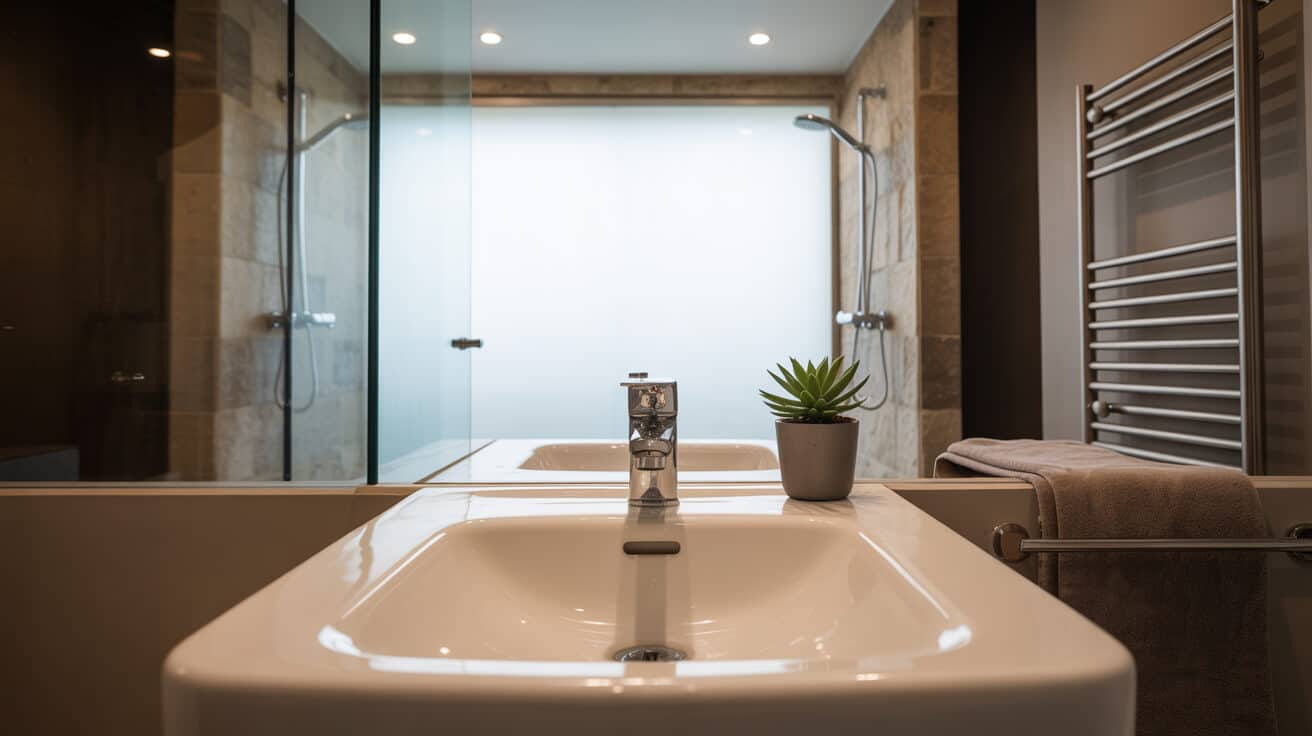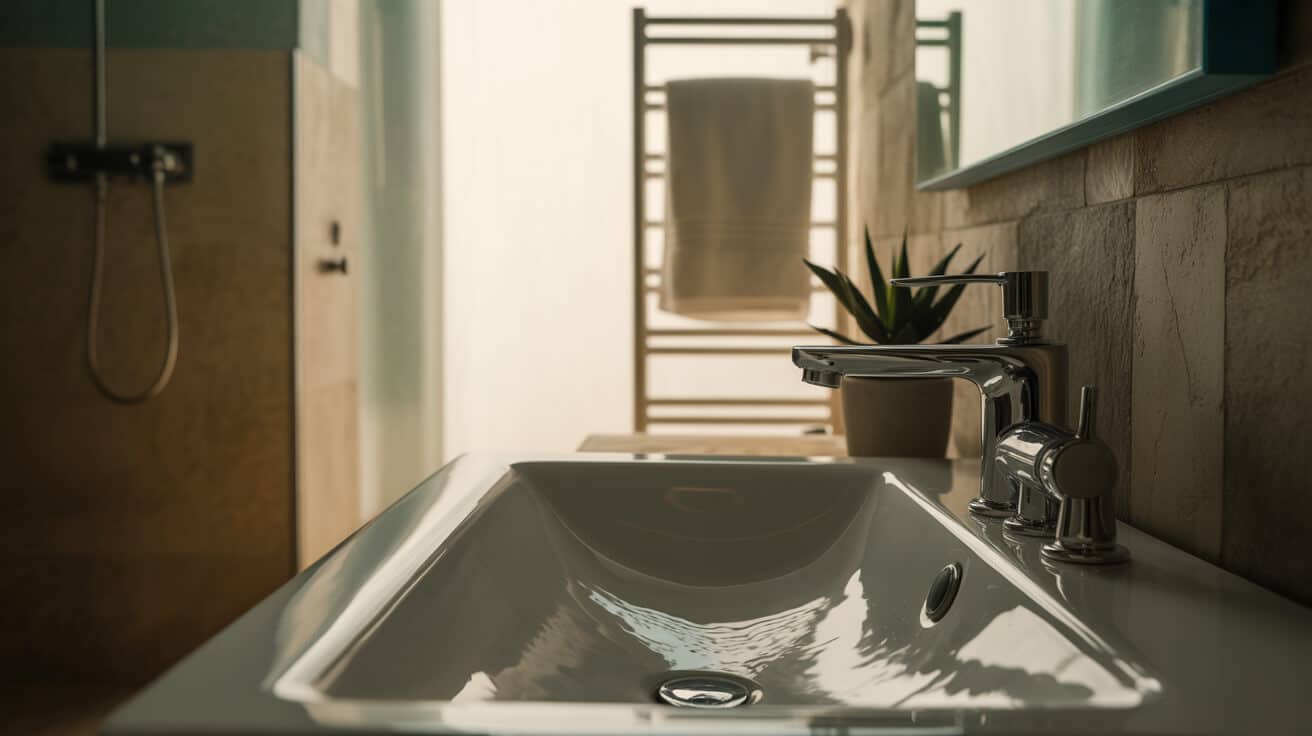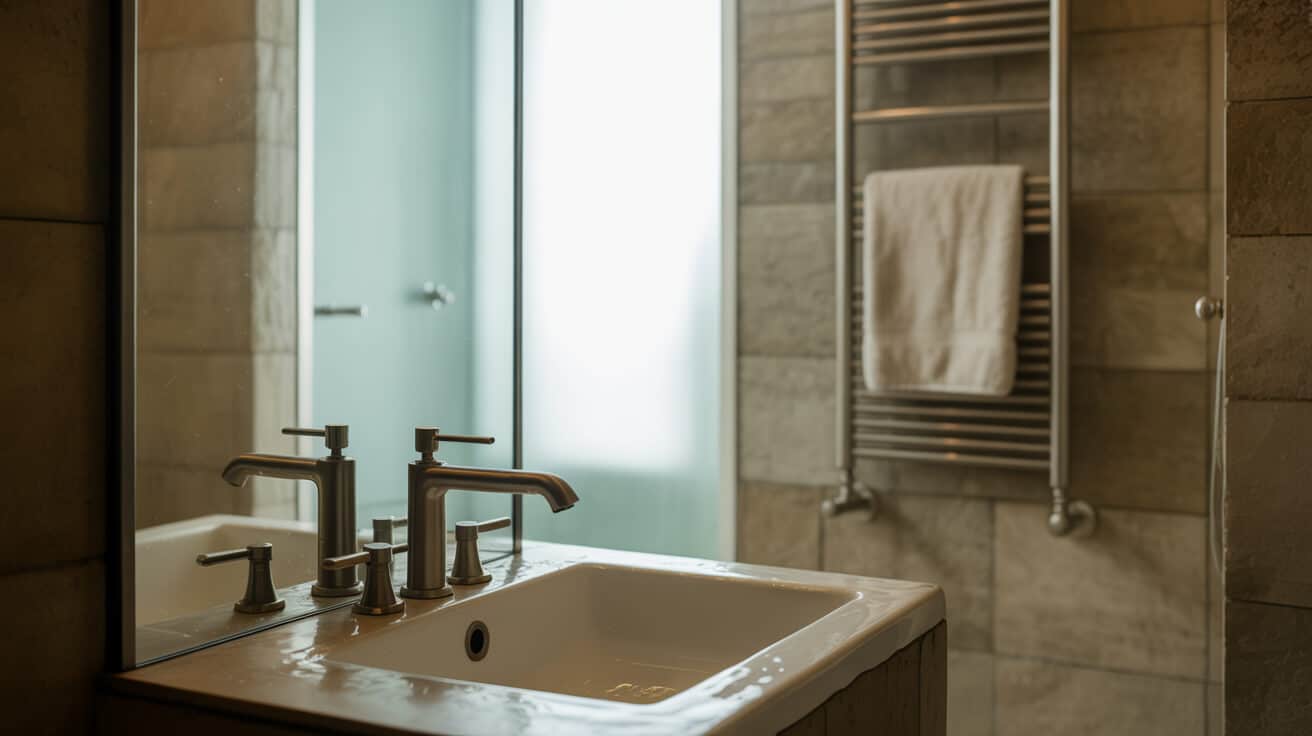Loss of supply for water systems presents one of the most immediate and disruptive challenges for modern environments—residential, commercial, and institutional alike. In practice, such an event halts key activities from hygiene and food preparation to heating and industrial process continuity. Individuals may experience uncertainty, financial implications, personal or organisational liability, and vulnerability, particularly where occupants are dependent, unwell, or at-risk. Rectification and risk management rely on prompt diagnostics, collaborative problem-solving between property stakeholders and professional engineers, and clear alignment with legal standards for user safety and infrastructure protection.
Etymology or name origin
The phrase “water supply” combines Old English roots for “wæter” and Mediaeval Latin “supplementum,” describing the provision or replenishment of potable resources. In technical domains, “plumbing” traces to the Latin “plumbum” (lead), echoing the historical use of lead pipes for water transport. Modern vocational terms have expanded, encompassing pressure regulation, system isolation, zone management, and crossover to heating, sanitation, and fire suppression. Language in the domain also reflects regulatory evolution, with distinct legal and operational meanings for key parts and processes.
Overview / context
Water supply in buildings
Building water systems ensure the continuous, controlled provision of potable and non-potable water to all required fixtures and appliances. Systems are designed for capacity and durability, using pressurised distribution networks linked to public mains, on-site storage, or hybrid sources. Instability or failure in these systems can threaten comfort, operational reliability, and health.
Service delivery models
Typical buildings receive water directly from the utility’s main via a boundary stopcock, metre, and inlet assembly. Multi-storey or high-demand properties often utilise pressure-boosted systems, gravity tanks, or emergency reserves to balance supply. Some rely on private wells, boreholes, or collected rainwater, especially in rural or resilience-oriented installations. Each structure requires routine maintenance, compliance checks, and ready access to emergency controls to minimise risk.
Professional roles and dependencies
Specialists, including engineers and plumbers, design, maintain, and intervene in these complex systems. Companies such as Plumbers 4U coordinate diagnostics, component selection, and restoration, often under time pressure and regulatory supervision. Building managers and business owners must balance cost, compliance, and user safety, making the support of certified service providers essential for risk transfer and satisfactory outcomes.
Dependent systems
Plumbing infrastructure’s reliability is vital for heating systems (boiler feeds, radiators), sanitation (toilets, showers, drains), on-premise processing (catering, clinics, manufacturing), and emergencies (firefighting). Water loss can lead to simultaneous heating shutdown, sewage hazards, and workflow interruption.
History
Early water provision
Historical households sourced water from shared wells, streams, or communal cisterns, manually supplying the property via buckets, troughs, or simple hand pumps. Early pipe systems featured clay, lead, or wooden tubes—often unreliable and prone to contamination.
Industrial emergence
The 18th and 19th centuries saw urbanisation fuel the invention of extensive piped water networks, steam-powered pumps, iron and copper pipes, and standardised fittings. Public health crises underscored the need for robust, sealed systems, prompting mass adoption of pressure-based infrastructure and improved appliances.
Contemporary evolution
Twentieth-century standards, such as the Water Supply (Water Fittings) Regulations 1999 and Building Regulations Part G, gave rise to the modern plumbing trade: certified, insured, and performance-guaranteed. Automated sensing, modular architectures, and risk-based maintenance further transformed services, supporting swift diagnostics and data-driven management. Social and regulatory frameworks continue to adapt in response to urban expansion, water scarcity, and the growing expectation of constant supply.

Concept / description
Water supply plumbing integrates a hierarchy of interconnected components within buildings, each serving a functional or protective role.
System architecture
- Service entry: The external main enters via a boundary valve and legal water metre, transitioning to controlled indoor distribution.
- Main distribution: Internal pipework, usually copper or high-grade plastic, delivers supply to floors and consumption zones.
- Isolation & control: Each significant branch or appliance has an isolation valve; system-wide stopcocks allow total shutdown during emergencies.
- Pressure management: Pressure reducing valves (PRVs), expansion tanks, and booster pumps stabilise delivery and protect against fluctuation.
- Protection & quality: Backflow preventers, non-return valves, and philtres prevent contamination and loss.
- Terminal outlets: Water is delivered to fixtures (taps, WCs, showers), appliances, and system features such as heating, fire suppression, or process feeds.
Typical points of failure
- Isolating or main stopcock closure or failure
- Burst or frozen pipe, especially in uninsulated or exposed locations
- Tank/cistern malfunction or low level
- Water metre faults or network-side isolation errors
- Valve blockages (e.g., PRV, non-return valves)
- Airlocks following repair, backflow, or partial drainage
Functionality / purpose / applications
Water supply plumbing delivers core value across private, public, and business settings:
- Hygiene and daily living: Drinking, cooking, washing, bathing, and cleaning rely on robust provision.
- Heat and climate: Radiator and boiler circuits depend on secure water feeds for hot water and heating.
- Risk mitigation: Fire safety (sprinkler, suppression), emergency eyewashes, and plant cooling.
- Business and institutional continuity: Food service, healthcare, laboratory, hospitality, and education all depend on stable supply.
- Resilience and safeguarding: Vulnerable users (elderly, young children, immune-compromised) require unbroken access for health and well-being.
Classifications / types / variants
Systems and service interruptions may be grouped according to their structure and failure profile.
Types by source
- Direct main supply: Standard for most buildings; vulnerable to utility outages or regional works.
- Storage-fed supply: Mitigates network disruptions and balances pressure; common in legacy or high-rise designs.
- Private or alternative supply: Borehole, well, or harvested rainwater; typically requires specialist filtration and backup arrangements.
Service interruption variants
- Complete outage: Universal loss at all outlets; distinct diagnostic and legal profile, often utility-linked.
- Partial outage: Some outlets or zones dry; usually internal, e.g., result of isolated faults, airlocks, or closed valves.
- Intermittent supply: Fluctuating or unpredictable service, indicating chronic pressure issues, on-off external supply, leak, or system contamination.
Pressure and quality events
- Low pressure: Insufficient head for normal operation; observed with supply-side loss, tank issues, or downstream blockages.
- Contamination warning: Discoloured, odorous, or unsafe water, often following service restoration or cross-connection.
Systems / tools / methodologies
Diagnostic methods
Sequential isolation
A systematic process to localise failure: 1. Confirm universal or partial loss. 2. Inspect and test all accessible valves (property-side and within zones). 3. Progressively isolate and test branches and runs. 4. Log symptoms and collect data at each outlet.
Use of advanced tooling
- Pressure and flow metres: Quantify the degree and pattern of loss.
- Acoustic detectors/thermal imager: Localise leaks or blockages without structural damage.
- Borescope cameras and pipe tracers: Investigate concealed or embedded lines.
- Airlock pumps and thawing kits: Provide immediate remedy for common physical blockages.
Restoration and protection
- Valve/service replacement: For failed shutoffs, PRVs, or non-return devices.
- Emergency bypasses: Provision of temporary feeds or tank transfer.
- Compliance documentation and digital log: Record for regulatory, insurance, and maintenance use.
Table: Key System Elements and Diagnostics
| System Component | Typical Diagnostic Tools | Example Issue |
|---|---|---|
| Main stopcock | Visual/functional check, pressure gauge | Accidental closure, valve corrosion |
| Pipework (copper/PE-X) | Moisture sensor, thermal imaging | burst pipe, freeze/thaw, unseen leak |
| Storage tank/cistern | Dip measure, float test | Dry tank, debris, valve stuck |
| Non-return/backflow valve | Flow simulation, visual check | Jammed or reversed valve, contamination risk |
| Booster/pump | Metre reading, flow check | Inoperative/miswired, insufficient head |

Stakeholders / entities involved
Homeowner and occupant
You are typically first to experience loss of supply, noticing changes at taps, appliances, or in daily routine. Your fast reporting, access facilitation, and basic checks (e.g., confirming that your stopcock is not closed) can accelerate resolution and limit disruption.
Landlord, property manager, and facility lead
Your company or organisation has a statutory duty to remedy water interruption within reasonable timeframes, secure professional diagnostics, and notify tenants of planned or emergency works. You also navigate documentation, insurance, and legal obligations arising from the event.
Plumbing and heating companies
Firms such as Plumbers 4U mobilise rapid technical assessment, component replacement, restoration, and legal compliance. Your expertise in multi-system diagnostics, statutory logs, and client communication minimises risk of recurrence and liability.
Water supply utility providers
Your company is responsible for investment, inspection, repair, and planned works in the municipal supply, as well as managing outage notification and customer support lines.
Public and private organisations have roles in validating legal obligations, approving emergency measures, and supporting affected users, notably where the property houses elderly, disabled, or otherwise protected individuals.
Legal / regulatory / ethical considerations
Water industry and building regulations
- Water Supply (Water Fittings) Regulations 1999: Governs installation standards, component types, protection against contamination, and certification for repairs and modifications.
- Building Regulations (Part G): Ensures health, hygiene, and safety; sets performance benchmarks for all new or altered installations.
- Competent person schemes: Mandate qualifications for engineers performing regulated work.
Tenancy and property law
- Section 11 Repairs (UK Housing Act 1985): Places the duty on your landlord to restore water and heating within a reasonable period, especially if your health and safety are impacted.
Notification, safeguarding, and ethics
- Your organisation may be obliged to notify authorities of contamination, risk to health, or persistent interruption. Safeguarding rules mandate prioritisation for vulnerable users, including temporary relocation or alternate supply where feasible.
- All engineers must adhere to transparency, accurate reporting, and minimal disruption to occupants.
Performance metrics / data / measurements
Standard measurements and performance benchmarks
- Pressure: Normal building supply in the UK is expected to be at least 1.0 bar at the stopcock. High-performance systems may deliver up to 3–4 bar, subject to device ratings.
- Flow rate: Flow is measured in litres per minute (L/min); typical benchmarks are 9–12 L/min at your kitchen tap for acceptable performance.
- Service restoration times: Your company, in line with service agreements, may guarantee restoration of supply within hours, with emergency targets for vulnerable users.
- Incident frequency: Property managers track outages per annum and mean file-to-fix duration, using this for maintenance and insurance assessment.
Sample data table: Restoration Benchmarks
| Benchmark | Typical Requirement | UK Regulatory Minimum |
|---|---|---|
| Pressure at main tap | 1.0–1.5 bar | 1.0 bar |
| Flow at kitchen tap | 9–12 L/min | 9 L/min |
| Emergency fix time | ≤ 24 hours (fit-for-purpose use) | “Reasonable time” |
| Documentation/log turnaround | 24–48 hours | “Promptly” |
Challenges / barriers / limitations
Operational and technical challenges
- Old or poorly documented pipe networks impede rapid diagnosis and lengthen downtime.
- Access restrictions in tenant-occupied or high-security environments delay inspection.
- Unusual pipe materials, mixed systems, or historic modifications may require specialised expertise.
Social and economic barriers
- Cost sensitivity can prevent timely or full repairs, exposing you to repeated events.
- Disruption to your daily routine, business operations, and property value may result from prolonged outages.
Human and legal dimensions
- Uncertainty about responsibility (e.g., is the fault in your domain or the utility’s) can delay action.
- Legal ambiguities in multi-unit buildings or under shared/communal systems complicate liability assignment and remedy process.
Impact / influence / legacy
Loss of water supply leaves deep operational and reputational marks. For most, even short outages are acutely disruptive—eroding your sense of security and property value. In institutional and business settings, service loss can force closure, precipitate insurance claims, and trigger regulatory review. High-profile incidents have reshaped codes of practice, insurance requirements, and the market for resilience solutions. The professionalisation and certification of plumbing firms, such as Plumbers 4U, has grown in parallel, providing improved transparency, trust, and assurance of quality.
Loss events also shape social perception of what constitutes “essential services,” aligning user expectations with continual supply and rapid restoration. Building standards and planning policies evolve in response, strengthening requirements for redundancy, documentation, and emergency provision.
Future directions, cultural relevance, and design discourse
Future readiness for water supply reliability hinges on technological and systemic innovation, policy adaptation, and sustained professional evolution. Digital diagnostics, predictive component replacement, and modular overhauls promise proactive management, while new materials and connection protocols reduce failure risk. Cultural narratives increasingly highlight water as a finite, collective resource, intertwining sustainability into design and regulatory frameworks. Debates about infrastructure privatisation, climate adaptation, and public good continue to mould policy and expectation.
Branded service providers, like Plumbers 4U, factor heavily into the ongoing professionalisation of the field, driving best practice, customer trust, and sectoral advocacy for resilience—all while underscoring your need for proactive management and quick, compliant response when water disruption occurs.

